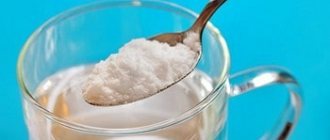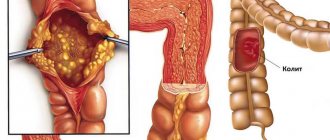| Alkalosis, , blood pH, body pH, urine pH, urine pH measurement, saliva pH, acidification of the body, acidity of the body, acidosis |
Maintaining acid-base balance in the body is very important for the normal functioning of all internal human systems. The pH level determines the optimal activity of all enzymes involved in metabolism.
When the balance of acids and alkalis is disturbed, the activity of enzymes decreases, metabolism is disrupted, which is why toxins begin to accumulate in the body. Therefore, the first stage of cleansing the body of toxins is restoring the pH balance.
The lifestyle of a modern person often leads to disturbances in the acid-base balance in the body. Most often, people suffer from increased levels of acidity - acidosis . This is caused by modern lifestyle.
An increase in the acidity of the body is caused by a lack of diet and a decrease in physical activity, stress, strict diets, alcohol abuse and smoking.
Acidosis is now much more common than excess alkali - alkalosis.
Checking urine pH
It is carried out in the morning on an empty stomach. Take the strip and dip the edge with the colored indicators into the urine sample for a few seconds. Remove the strip and place it on a white paper napkin with the indicators facing up. After 15 seconds, compare the color combinations of the indicators with the color reference table on the packaging. Sometimes the indicator does not change color if the pH of the body matches the pH of the indicator paper itself. If the indicator readings are between two adjacent values on the scale, then the result is also considered the average value between the adjacent readings on the pH scale. The normal pH value of urine is from 5 to 7. Acidification of urine indicates a general acidification of the body. When the acidity level is below 5.5, uric acid stones often form in the body. At pH levels below 6, oxalate stones occur. And when the pH is above 7-7.5, phosphate stones appear.
To check the pH of urine, we recommend using indicator strips Article 486.
It is recommended to take samples to determine the acidity of urine and carry out tests only in a medical institution.
Causes of acidosis
The acid-base balance of the body, when shifted towards a decrease in the hydrogen activity indicator, leads to a pathological condition called acidosis. The initial cause of the condition is metabolic disorders, in which toxic substances do not leave the body.
An increase in acidity levels can be caused by:
- infectious diseases;
- stomach disorders;
- pregnancy;
- starvation.
Checking saliva pH
Optimal measurement from 10 to 12 hours. It is better to measure it on an empty stomach, two hours before or two hours after a meal. To get the result, you need to moisten the paper with saliva and place it on your tongue for 2-3 seconds. Typically, the acidity of mixed human saliva is 6.8–7.4 pH, but with high salivation rates it reaches 7.8 pH. The acidity of the saliva of the parotid glands is 5.81 pH, of the submandibular glands - 6.39 pH. In children, the average acidity of mixed saliva is 7.32 pH. Acidification of saliva indicates general acidification of the body.
It is recommended to take samples to determine the acidity of saliva and carry out tests only in a medical institution.
Types of acidosis
The following types of increased acidity levels are distinguished:
- the compensated type is determined when the readings are not lower than 7.35, with signs of increased heartbeat, increased blood pressure, and shortness of breath;
- the subcompensated type is detected at values of 7.34-7.25, causing depression of cardiac function, arrhythmias, shortness of breath, vomiting and diarrhea;
- the uncompensated type is observed when the indicator is less than 7.24, leading to disorders of the central nervous and cardiovascular systems, and the digestive tract.
Acidosis is divided or classified according to its origin:
- gas or respiratory;
- metabolic type (with an excess of oxidation products);
- excretory form (appears when it is difficult to remove non-volatile acids through the kidneys or digestive system);
- exogenous type (acid poisoning);
- mixed type (combines all types).
Acidity in the stomach. High and low acidity
To measure the acidity in the stomach, you need to take a sample of the gastric juice itself. This can ONLY be done in a medical facility. To measure stomach acidity, place the indicator strip into the gastric juice for a few seconds, then after 1 minute compare the color combinations of the indicators with the color reference chart on the package.
But in folk medicine there is another method (incorrect): “take a litmus strip and place it deep on the root of the tongue, in the morning, on an empty stomach, then after 1 minute compare the color combinations of the indicators with the table of color standards on the package.” This option is used by some healthy lifestyle promoters.
The minimum theoretically possible acidity in the stomach is 0.86 pH. The maximum theoretically possible acidity in the stomach is 8.3 pH. Normal acidity in the lumen of the body of the stomach on an empty stomach is 1.5–2.0 pH. The acidity on the surface of the epithelial layer facing the lumen of the stomach is 1.5–2.0 pH. The acidity in the depths of the epithelial layer of the stomach is about 7.0 pH. Normal acidity in the stomach is 1.3–7.4 pH. The cause of many diseases of the digestive tract is an imbalance in the processes of acid production and acid neutralization. Long-term hypersecretion of hydrochloric acid or lack of acid neutralization, and, as a consequence, increased acidity in the stomach and/or duodenum, causes so-called acid-dependent diseases. Currently, these include: peptic ulcer of the stomach and duodenum, gastroesophageal reflux disease (GERD), erosive and ulcerative lesions of the stomach and duodenum while taking aspirin or non-steroidal anti-inflammatory drugs (NSAIDs), Zollinger-Ellison syndrome, gastritis and gastroduodenitis with high acidity and others. Low acidity is observed with anacid or hypoacid gastritis or gastroduodenitis, as well as with stomach cancer. Gastritis (gastroduodenitis) is called anacid or gastritis (gastroduodenitis) with low acidity if the acidity in the body of the stomach is approximately 5 or more pH units. The cause of low acidity is often atrophy of parietal cells in the mucous membrane or disturbances in their functions.
To check the acidity in the stomach, we recommend using litmus paper Article 542
Taking samples to determine the acidity of gastric juice and conducting tests is recommended only in a medical institution.
What causes acid-base imbalance?
An imbalance in the hydrogen activity index can develop depending on two fundamental reasons: metabolic and respiratory. Respiratory pathology occurs due to the accumulation of large amounts of carbon dioxide in the blood, which causes an increase in acidity.
The causes of such disorders are respiratory dysfunction due to diseases of the lungs, nervous system, and muscles.
Metabolic disorders appear due to an increase in the production of acids by the body itself and the development of metabolic disorders. The most striking example of such an imbalance is diabetes.
Other causes of pH loss include:
- kidney dysfunction;
- deficiency or loss of alkalis with digestive juices;
- surgical operations;
- states of intoxication of the body;
- uncontrolled use of diuretics;
- excess of the adrenal hormone aldosterone.
Blood acidity
It will not be possible to check the pH of the blood with strips, since they will be stained with blood and the readings cannot be read (this applies to all coloring liquids, for example: juices, coffee, tea, etc.). To measure the pH of such liquids, use pH meter Article 1346.
The acidity of human arterial blood plasma ranges from 7.37 to 7.43 pH, averaging 7.4 pH. The acid-base balance in human blood is one of the most stable parameters, maintaining acidic and alkaline components in a certain balance within very narrow limits. Even a small shift from these limits can lead to severe pathology. When shifting to the acidic side, a condition called acidosis occurs, and to the alkaline side, alkolosis occurs. A change in blood acidity above 7.8 pH or below 6.8 pH is incompatible with life. The acidity of red blood cells is 7.28–7.29 pH. Normal blood revitalizes lymph cells that can destroy tumor cells. There are many lymphatic cells (eg NK cells, LAK cells) in the human body. Their uniqueness lies in the fact that they are able to distinguish normal cells from diseased and damaged ones, and destroy the latter. This is the function of the human body's immunity. The greatest activity of lymphatic cells in destroying diseased cells occurs at pH 7.4. However, usually around the affected cells, there is a more acidic environment, which interferes with the activity of lymphocytes, which work better at a slightly alkaline pH. By consuming foods that have an alkalizing effect, you can adjust the pH balance within 0.5 units, creating a favorable environment for the action of lymphocytes and the destruction of affected or abnormally constructed cells.
It is recommended to take samples to determine blood acidity and conduct tests only in a medical institution.
What to do if the pH is lower than normal?
We can regulate our acid-base state using three main mechanisms:
- physical activity and proper breathing;
- choosing certain foods;
- the use of various biologically active components.
If the pH deviates towards the acidic side, it is necessary to increase the content of alkaline foods in the diet. The daily diet of a healthy person should include at least 75-85% of alkalizing foods, and in the diet of a person suffering from acidification, their share should be increased to 90%.
Alkalinizing foods include vegetables and fruits. Freshly prepared vegetable or fruit juices alkalize the blood more effectively. And if you add 1-2 spoons of Eureka BALANCE , you will get a powerful alkalization of the body, and much softer and safer than what happens when you take soda internally.
Vaginal acidity
To get the result, you need to moisten the paper into the vagina, placing it for 2-3 seconds. The normal acidity of a woman's vagina ranges from 3.8 to 4.4 pH and averages 4.0 to 4.2 pH. Vaginal acidity in various diseases. Normal microflora: acidity from 4.0 to 4.5 pH. Cytolytic vaginosis: acidity less than 4.0 pH. Candidal vaginitis: acidity from 4.0 to 4.5 pH. Trichomonas colpitis: acidity from 5.0 to 6.0 pH. Bacterial vaginosis: acidity greater than 4.5 pH. Atrophic vaginitis: acidity greater than 6.0 pH. Aerobic vaginitis: acidity greater than 6.5 pH
To check the acidity of the vagina, we recommend using litmus paper Article 564
It is recommended to take samples to determine the acidity of the vagina and carry out tests only in a medical institution
.
What does acidosis lead to?
When a high level of acidity appears in the body, the following symptoms are usually observed:
- headache;
- feeling drowsy;
- uneven heartbeats;
- cough of unknown origin;
- cardiopalmus;
- weakness;
- loose stools;
- disruption of the digestive tract;
- dyspnea.
In some cases, pathology can lead to the appearance of severe metabolic diseases (diabetes mellitus) and even to a coma.
Sperm acidity
The normal acidity level of sperm is between 7.2 and 8.0 pH. Deviations from these values are not in themselves considered pathology. At the same time, in combination with other deviations, it may indicate the presence of a disease. An increase in the pH level of sperm occurs during an infectious process. A sharply alkaline reaction of sperm (acidity approximately 9.0–10.0 pH) indicates prostate pathology. When the excretory ducts of both seminal vesicles are blocked, an acidic reaction of the sperm is observed (acidity 6.0–6.8 pH). The fertilizing ability of such sperm is reduced. In an acidic environment, sperm lose motility and die. If the acidity of the seminal fluid becomes less than 6.0 pH, the sperm completely lose their motility and die.
To check the acidity of semen, we recommend using litmus paper Article 566 or Article 542.
It is recommended to take samples to determine the acidity of semen and carry out tests only in a medical institution.
How to check acid-base balance
If there is a suspicion of pH imbalance, then tests become necessary. It is possible to monitor the body's functioning at home. Blood, saliva and urine are used as biomaterials. Experts recommend conducting research an hour before eating food or 2 hours after.
Microelectronic device for special purposes
Using a special electronic device you can find out the pH balance. Hand-held devices are called pH meters and can be purchased at pharmacies or specialty stores. Diagnostics using the device is as follows: a puncture is made on a finger (usually the right hand) with the device, after 2-3 seconds. the display shows the numerical value of the indicator.
Indicator strips
In pharmacies it is possible to purchase litmus strips, which can be used to measure acid levels. The advantages of the method include its simplicity and low cost. However, there is also a drawback in the form of significant errors.
The acid-base balance of the body can be checked using indicator strips.
The essence of the method is to make a puncture on the finger of the right hand using a scarifier (medical blade) and squeezing a few drops of blood into a small container. Next, a test strip is taken and lowered into the blood. After 5 sec. the result is interpreted, determined by the color of the strip, which is compared with the scale.
Comparison of pulse and lower pressure
You can get a general idea of the pH value using a pressure measuring device (tonometer). For these purposes, measurements are taken of the lower indicator and the number of pulse beats in a calm state.
The results obtained are compared: if the difference between the values is more than 10, then this indicates the presence of an alkaline environment in the body; if the difference between the values is less than 10, then this indicates acidification. When the difference is more than 20 units, this indicates a significant deviation from normal kidney function.
Comparison of the color of the conjunctival epithelium of both eyes
You can visually determine the pH value by the color of the conjunctiva of the eyes. To do this, an examination is performed in front of a mirror in both eyes. By pulling the lower eyelid down, the color of the inner eyelid is examined.
If the eyelid has a pink or whitish tint, this indicates increased acidity, a rich red color indicates a normal value, and dark shades indicate an alkaline imbalance.
Treatment regimen according to Neumyvakin
I. P. Neumyvakin has been practicing traditional medicine for over 40 years. His theories for treating acid-base imbalance are based on the methods of separate nutrition and baking soda therapy. The basis of the healer’s treatment method is to take warm soda along with honey.
The mixture is used starting with small doses and according to the following scheme:
- The medicine is first taken in the morning on an empty stomach.
- Taking soda diluted in heated water or milk is carried out 3-5 times a day 1.5 hours after eating food or 1 hour before it.
- The initial dosage is 1/4 tsp. for 1 tbsp. liquids.
- After 3 days, the dosage is increased to 1 tsp.
- After completing 4 days of therapy, a break is taken for 3 days.
- Then the reception is resumed, but 15 minutes later. before eating or after eating 2 hours.
Prepare the solution as follows:
- The required amount of soda is poured initially 0.5 tbsp. boiling water
- The solution is mixed well.
- Next, 0.5 tbsp is poured into it. cold water.
- Honey is added to taste.
The method has a number of contraindications:
- diabetes;
- stage 4 cancer;
- allergic reactions to soda;
- stomach ulcer;
- pregnancy;
- acidity disorder of the digestive tract.
The need to maintain the acid-base balance at a concentration of 7.365 units is due to raising the level of immunity, good condition of the body, and prolongation of youth. Deviations and the appearance of imbalance indicate the danger of developing diseases and require immediate adjustment of the diet.
Article design: Anna Vinnitskaya
How to restore acid-base balance
The acid-base balance of the body often shifts due to an incorrect lifestyle and requires adjustment in the following aspects:
- nutrition;
- rest and sleep patterns;
- physical activity;
- eliminating stressful situations.
Reduce intake of acidic foods
The first thing to do is change and review your diet. At the same time, drink at least 2 liters of water per day and eliminate bad habits. Experts emphasize the importance of reducing the amount of acid and increasing alkalinity in the body by reducing the consumption of oxidizing foods.
To eliminate acidosis, you must adhere to the following nutritional rules:
- exclude alcoholic drinks;
- reduce the consumption of foods with a high content of salt, preservatives, which are amenable to refining processes and processing at high temperatures;
- reduce the use of sugar substitutes and food colorings;
- remove fried foods from your diet;
- avoid fast food (convenience foods, hot dogs, pizza, shawarma);
- reduce the use of sweet flour products;
- reduce meat consumption;
- reduce processed grains, pasta, and white bread in your diet.
There are a number of acidic foods that contain large amounts of nutrients that cannot be completely eliminated from the diet, but should be consumed in moderation.
These include:
- brown rice;
- meat products;
- lentils and beans;
- oats;
- eggs;
- whole grain breads.
Go on an alkaline diet
To balance the pH level, experts recommend switching to a diet containing a large amount of alkali, which should contain green plants and organic products.
The list of required foods when following an alkaline diet includes:
- green leafy vegetables (spinach, celery, cabbage);
- wheat with sprouts;
- vegetables that do not contain starch (onions, garlic, broccoli, radishes, tomatoes, cucumbers, zucchini);
- raw vegetables, since when food is processed using different cooking methods, the content of alkaline minerals in them decreases;
- healthy products (seaweed, bone broth, poppy root, fish oil, coconut and olive oil, dates, raisins);
- vegetables containing starch (potatoes, beets);
- proteins of plant origin (legumes, almonds);
- fresh fruits, including lemon, grapefruit, citrus fruits;
- Apple vinegar.
Steamed dishes are recommended as a therapeutic diet.
Drink alkaline water
In nature, there are 7 groups of waters, differing in their indicators of hydrogen activity, which are summarized in the table.
| Group | Strongly acidic | Sour | Slightly sour | Neutral | Slightly alkaline | Alkaline | Strongly alkaline |
| pH | until 3 | 3-5 | 5-6,5 | 6,5-7,5 | 7,5-8,5 | 8,5-9,5 | from 9.5 |
Distilled water has a pH of 7. If you add sodium carbonate (soda) to it, it will have alkaline properties. When water is filtered using reverse osmosis, the output is an acidified liquid with a reading of 6.9 units.
However, it is much better when compared to tap water. Alkaline water from mineral springs has a pH value of 8 to 11.
Reduce the entry of drugs, toxins and chemicals into the body
The acid-base balance of the body can be automatically disturbed in the direction of increasing acidity due to uncontrolled intake of chemical drugs and toxic substances.
The lists of products that it is advisable to avoid or reduce consumption include:
- caffeine;
- drugs with opium;
- sedatives;
- acetazolamide;
- non-steroidal anti-inflammatory substances;
- aspirin;
- carbonic anhydrase inhibitors.
To reduce dependence on medications, it is necessary to exclude from your lifestyle all the factors leading to their use:
- lack of sleep;
- stress;
- sedentary method;
- allergens.
Beet top color
The type of soil affects the ability of plants to absorb nutrients, and this is reflected in their appearance. If you don't know how to measure soil acidity, just inspect your garden beds. The dependence is most clearly manifested in the appearance of beet tops:
- The soil is acidic if the leaves have a red tint.
- In a moderately acidic environment, red veins remain, but the tops are green.
- In a neutral environment, the tops are green, sometimes with reddish petioles.
- Beets do not grow in alkaline soil.
Source hgtvhome.sndimg.com











